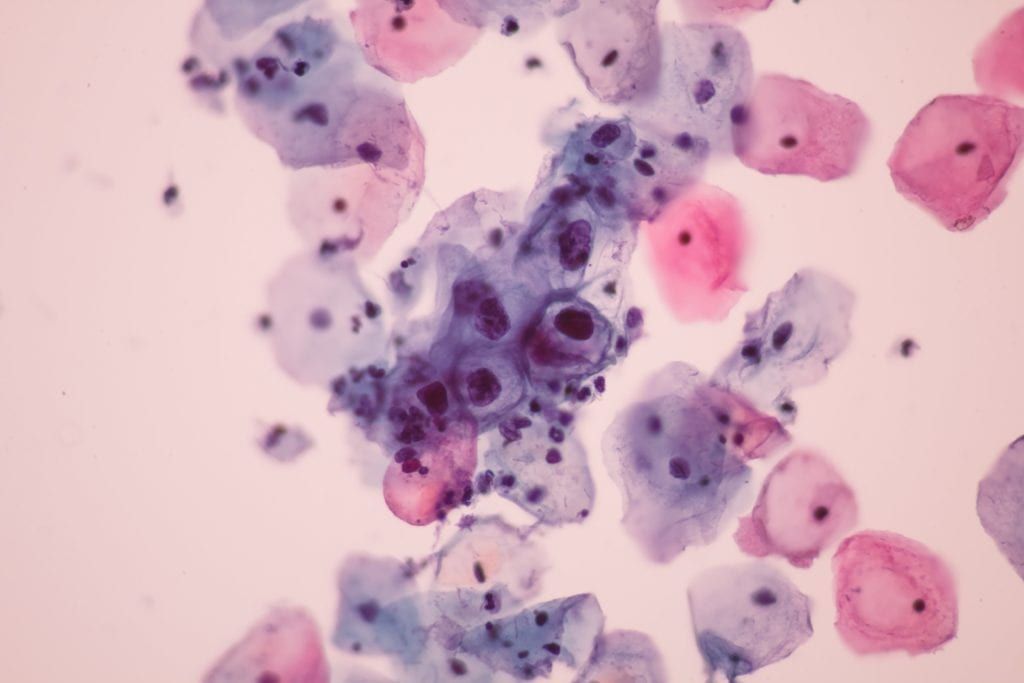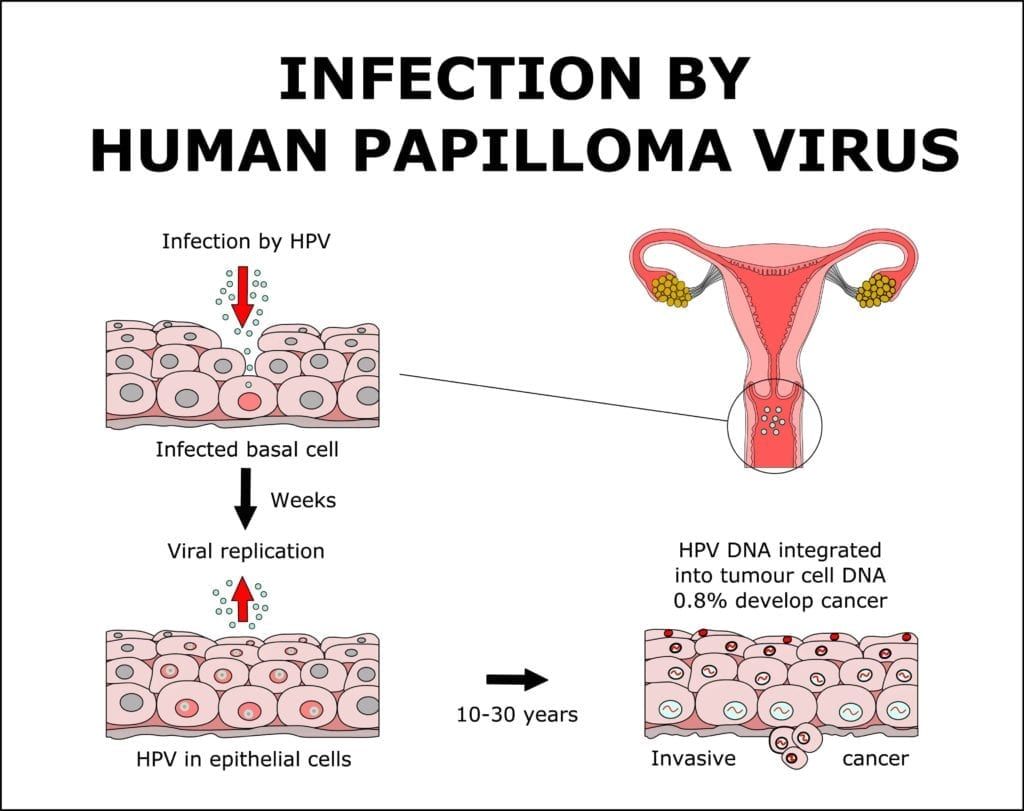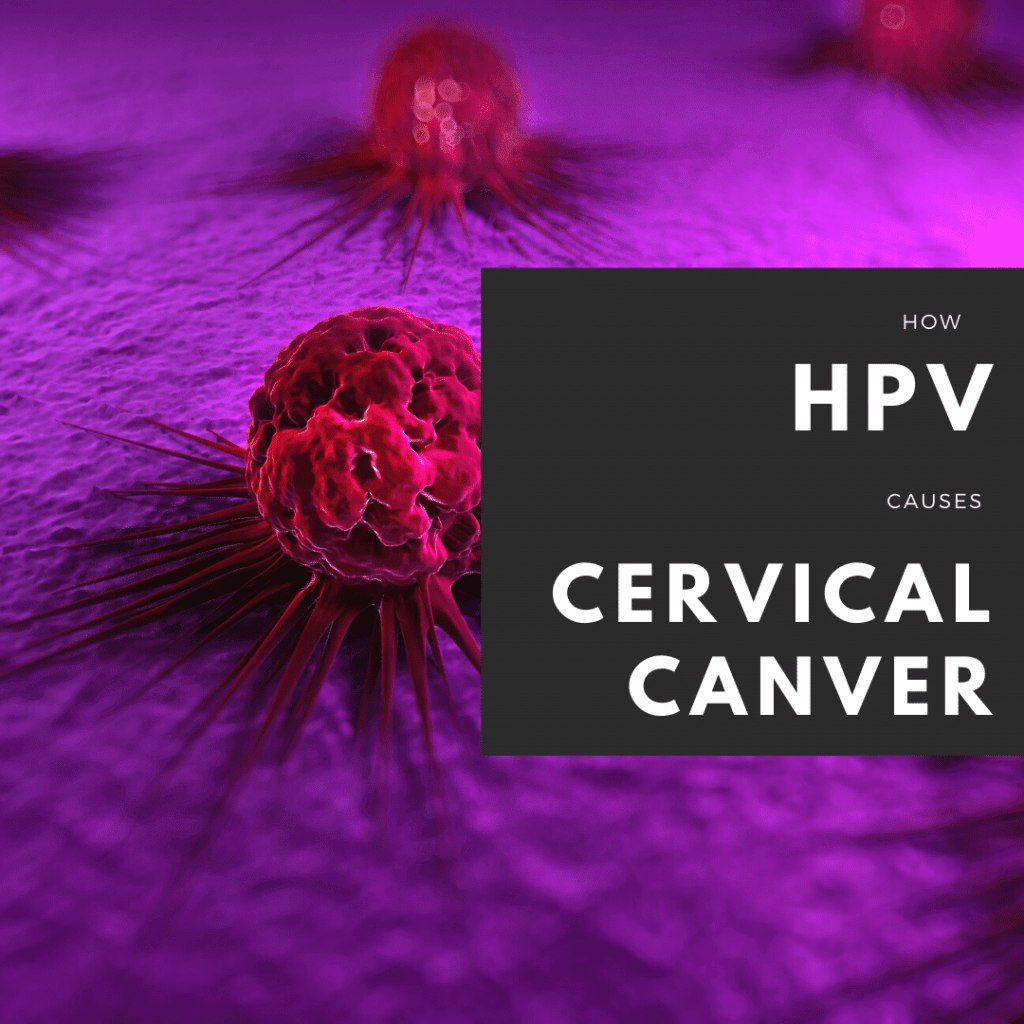If you are reading this article, then you are probably aware of the fact that certain types of human papillomavirus (HPV) can cause cancer. But have you ever wondered why only certain types of HPV cause cancer? Or about how, exactly, these types of HPV go from being a virus to being cancerous?

In order to understand how HPV can cause cancer, we first need to take a look at the different types of HPV. There are two types of the virus: oncogenic and non-oncogenic. The oncogenic type is associated with the possibility of causing cancer, while the non-oncogenic has only been found to cause genital warts. Both oncogenic and non-oncogenic types of HPV often go unnoticed by the individuals they have infected since there may be no symptoms.
Since the virus can be asymptomatic, it tends to spread quickly from one individual to another. HPV is extremely common, to the point where the National Cancer Foundation estimates nearly all sexually active people are infected among becoming sexually active. The National Cancer Foundation also notes that about half of these infections are oncogenic.
However, being infected with the oncogenic type of HPV does not guarantee you will get cancer. In fact, the Centers for Disease Control and Prevention estimates that only 10% of women with HPV will develop the type of infection associated with cancer. This is because the majority of HPV infections are eliminated naturally by the body’s immune system within two years.
Still, there are some cases where the body’s immune system is unable to eliminate the HPV infection. When this HPV infection is oncogenic, it can eventually turn normal cells into abnormal cells, and then eventually into cancerous cells. HPV affects squamous cells found in the inner lining of the cervix, oropharynx (back of the throat, soft palate, base of the tongue, and tonsils), anus, rectum, vagina, and vulva. Therefore, most HPV-related cancers are known as squamous cell carcinoma. In cases where the gland cells of the cervix are affected, then it can be called adenocarcinoma.
Oncogenic HPV infections have the possibility of turning into:

- Cervical cancer (almost 100% caused by HPV)
- Oropharyngeal cancers (70% caused by HPV)
- Anal cancer (90% caused by HPV)
- Vaginal cancer (75% caused by HPV)
- Vulvar cancer (70% caused by HPV)
To prevent HPV from turning into cancer, gynecologists perform screenings tests for cell changes. Currently, however, cervical cancer is the only type of HPV-caused cancer that has an FDA approved screening process. To screen for cervical cancer, your gynecologist will perform a pap smear where a sample of cervical cells is obtained by swabbing the cervix. This sample will then be sent to a laboratory, where it will be evaluated for the presence of high-risk HPV, as well as cervical cell changes.
In cases where cervical cell changes are observed, your gynecologist will be able to devise a treatment plan. Precancerous cells are easier to treat than cancerous cells, and early treatment may prevent cervical cancer from even happening. In most cases, additional testing will need to be completed to determine a specific diagnosis and the best treatment plan.

Dr. Geoffrey Zann is a Certified Robotic Da Vinci Surgeon, Board-certified by the American College of Obstetricians and Gynecologists, and a Diplomat of the American Board Obstetrics of Gynecology. He has been a member of the American Society for Colposcopy and Cervical Pathology, American Association of Gynecologic Laparoscopists, and the Hugh R. K. Barber Obstetric and Gynecologic Society.
